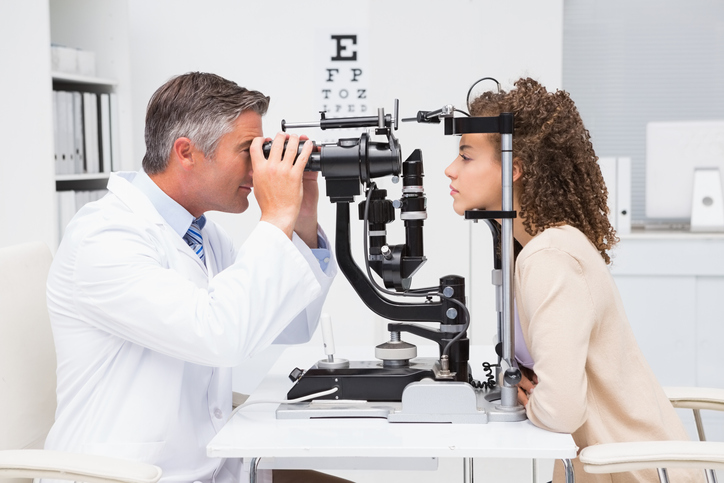
Content provided by Regeneron
Imagine no longer being able to watch your favorite movie, cook your favorite meal or drive to visit family. It is easy to take our vision for granted, and it’s important for those living with diabetes to understand that. Managing your condition goes beyond monitoring blood sugar and A1c levels. Staying on top of your eye health is just as important, and if left undetected, diabetes-related complications could put you at risk of vision loss.
Diabetes is the leading cause of blindness among people 20 to 74 years of age in the United States.i Diabetic Retinopathy (DR) is a common eye disease caused by diabetes and can result in Diabetic Macular Edema (DME). Both are serious conditions that can cause vision problems, sometimes without any symptoms at all.ii The good news is that there are simple ways to help detect the disease before it progresses. If you are experiencing vision loss associated with DR or DME, there are treatment options available. Read on to learn about ways you can be proactive and protect your vision.
1. Schedule an Annual Eye Exam
Early detection, timely treatment and follow-up care of DR can reduce risk of blindness by 95%.ii Yearly visits to your eye doctor is a vital way to detect DR, and it is one of the best ways to help protect your eyes from vision-threatening diseases. During your appointment, an optometrist may conduct a few different tests to check for retinal diseases. One of the most common tests is called a dilated eye exam, which involves the application of drops into your eye to dilate the pupil so your doctor can check the back of your eye for any changes. iii, iv
2. Monitor Your Vision From Home
You check your blood sugar at home, so why not your vision? In addition to regular, yearly appointments, it is a good idea to consistently monitor your vision as well. The Amsler Grid is a simple, at-home tool you can print out to monitor your eye health between eye appointments. It can help you and your doctor identify changes in your vision that could benefit from immediate attention.v If you notice any changes in your vision, be sure to contact your doctor.
3. Keep Your Diabetes in Check
A great way to help reduce the risk of developing diabetic eye disease is to control your diabetes. This can be done by keeping blood sugar and A1c levels within target range, controlling your blood cholesterol and blood pressure levels, not smoking, taking medication as directed by a healthcare provider, eating nutritious food, and exercising regularly.ii, iv, vi
4. Lean on Your Support System
If you are diagnosed with a diabetic eye disease, it’s important to remember that you don’t have to manage your health alone. Educating your friends and family is a great step towards ensuring they know how to help and be there for you. They can support you by providing transportation, taking notes at your upcoming doctor appointments, installing brighter lighting in your house, or using brightly colored labels to find things more easily.vii, viii
5. Tap into Useful Resources to Learn More
Whether you have been diagnosed with diabetic eye disease or not, there is a lot you can do to help protect against vision loss. Regeneron’s Look To Your Future can provide general information on several retinal diseases and low vision, as well as useful tips for caregivers and patients.
Make your eye health a priority. Speak with your doctor about potential vision loss caused by diabetic eye disease and what you can do to protect your vision as part of your diabetes health routine.
[i] National Diabetes Fact Sheet, 2011. Centers for Disease Control and Prevention (CDC) website. https://www.cdc.gov/diabetes/basics/quick-facts.html. Accessed August 5, 2020.
[ii] Facts about diabetic eye disease. National Institutes of Health, National Eye Institute website. https://www.nei.nih.gov/learnabout-eye-health/eye-conditions-and-diseases/diabetic-retinopathy. Accessed August 5, 2020.
[iii] Facts about Macular Edema. National Eye Institute website. https://www.nei.nih.gov/learn-about-eye-health/eye-conditionsand-diseases/macular-edema. Accessed September 11, 2020.
[iv] Diabetic Retinopathy. American Optometric Association website. https://www.aoa.org/healthy-eyes/eye-and-visionconditions/diabetic-retinopathy?sso=y. Accessed September 11, 2020.
[vi] Smoking and eye disease. American Academy of Ophthalmology (AAO EyeSmart) website. https://www.aao.org/Assets/e410b8d7-b604-4414-83f0-e02928d0e6c1/635863878154100000/smoking-and-eye-disease-academy-patient-educationpdf?inline=1. Accessed August 5, 2020.
[vii] Tips for living life to its fullest: tips for low vision. American Occupational Therapy Association (AOTA) Web site. https://www.aota.org/~/media/Corporate/Files/AboutOT/consumers/Adults/LowVision/Low%20Vision%20Tip%20Sheet.ashx. Accessed August 4, 2020.
[viii] Tips for making print more readable. American Foundation for the Blind, VisionAware Web site. https://careerconnectprod.azurewebsites.net/wp-content/uploads/sites/3/2019/12/visionaware_2016_gs_printreadable_en_accessible_final.pdf. Accessed August 4, 2020.


I like this article and these ways to prioritize your vision, thanks for sharing this helpful info